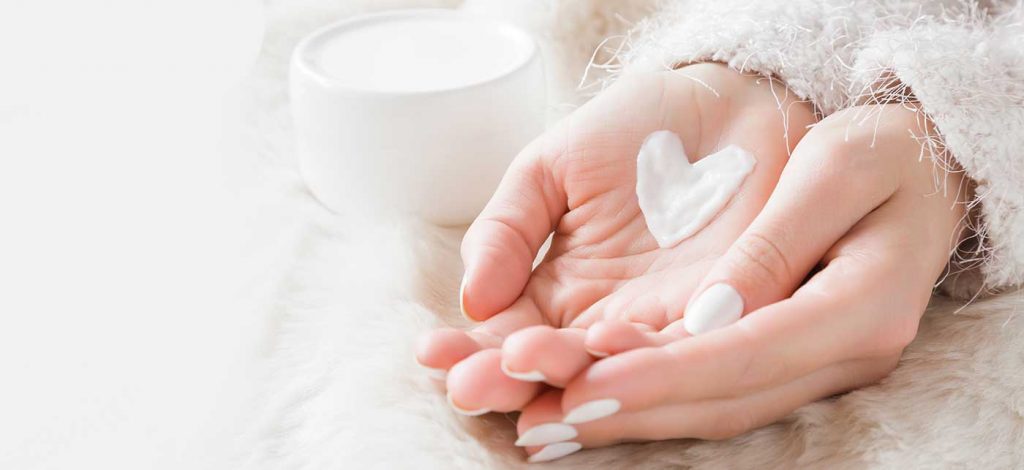Does dry skin trouble you in the winter months? It’s a common complaint. Winter air is dry to begin with, and the dryness is compounded by indoor heating and extra time spent indoors. Time spent outdoors in very cold temperatures can also lead to chapped, dry skin.
Here are some simple recommendations to avoid itchy, tight, dry skin this winter!
Humidity Levels
Consider the humidity level in your indoor environment. Dry air can be harmful to our skin and our overall health, both by impairing the body’s natural barriers and by making it easier for viruses and bacteria to spread through the air.
A relative humidity level between 40% and 60% is ideal for our health. In order to find out the humidity level in your home, you will need a hygrometer. They’re inexpensive and extremely useful!
Keeping indoor air at the right humidity level is a bit of a delicate balance in the winter. A higher humidity level indoors when it’s really cold outdoors can lead to condensation which, over time, can encourage the growth of mold. Condensation may start to appear on windows once the temperature gets below about -7 Celsius/19 Fahrenheit.
So what should you do? If you start to notice condensation, simply wipe the window trim and sills once a day with a clean towel. To be absolutely sure that mold does not grow, wash the same areas once a week with a spray cleaner made of water and doTERRA’s On Guard Cleaning Concentrate.
This means doing a little extra work around the house when it’s particularly chilly outside, but the payoff in better winter health is very much worth it!
To add moisture to the air, keep your diffusers running! I highly recommend doTERRA’s Dawn Aroma Humidifier, which is designed to create the ultimate level of comfort in any room. Its smart sleep mode maintains ideal humidity levels throughout the night, helping create the perfect environment for a good night’s sleep. It’s whisper quiet, easy to clean, has a large 1.8 litre water capacity, and can humidify for up to 22 hours.
Skin Support
In addition to keeping humidity levels balanced, you can support your skin directly with barrier-supporting lotions and balms.
Apply your product immediately after showering or bathing, while your skin is still damp. This helps to seal in moisture. Choose a product with a higher oil content, like a body butter or balm, to reinforce the skin’s natural barrier.
This DIY Whipped Body Butter with essential oils is an ideal choice.
It’s a simple solution for restoring moisture back into the skin using soft, natural butters & oils and the soothing power of Grapefruit and Wild Orange essential oils.
You can also choose to customize it by adding your favourite essential oils, and it will help to keep your skin hydrated for days after application.
If the skin on your elbows and knees tends to get rough or scaly patches in the winter, this DIY blend of softening base oils and moisturizing, healing essential oils is an amazing fix for that area:
DIY Dry Skin Balm
Combine in a glass bottle:
• 15 ml jojoba oil
• 15 ml sweet almond oil
• 10 drops Frankincense
• 10 drops Geranium
• 10 drops Lavender
Rub into elbows and knees twice daily, ideally in the morning and before bed.
I like this particular blend of essential oils, but you can choose to use any combination of the following oils, all of which have excellent skin moisturizing and healing properties:
Frankincense
Geranium
Lavender
Chamomile
Helichrysum
Patchouli
Myrrh
Keep up a routine of using your essential oils and humidifiers this winter – these are your main tools for keeping your skin supple and healthy all winter long!





